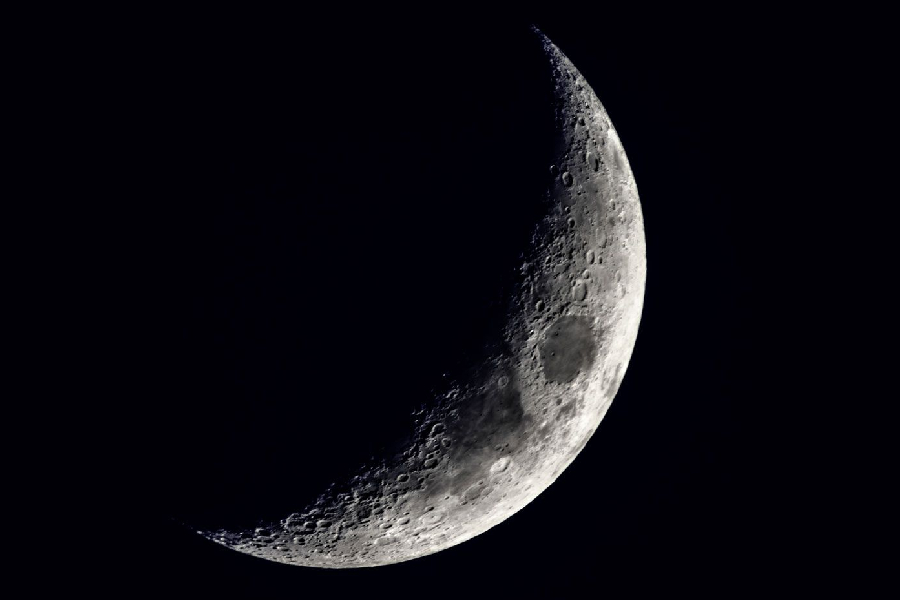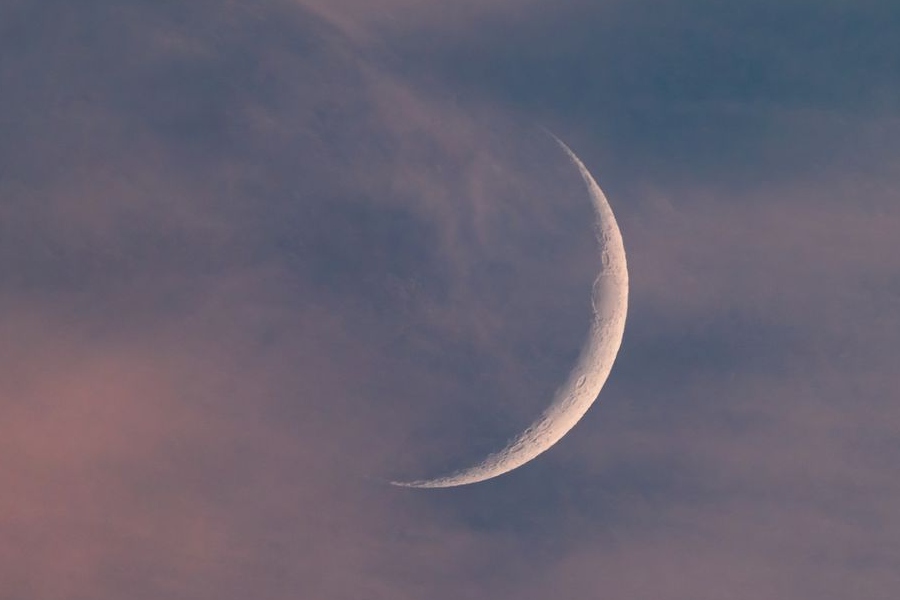Of the eight major phases that comprise the lunar cycle, perhaps the most misunderstood and intriguing is the phenomenon known as the New Moon. Every month, Earth observers gaze up into the night only to find our lone natural satellite seemingly vanished from the heavens. But what is New Moon exactly, and what causes this disappearance of Earth’s companion in the darkness?
We will learn what special alignment factors distinguish each successive New Moon event from the last. We’ll also study the influences a New Moon holds over Earthly tides and other natural cycles.
Stay engaged as we explore how cultures and belief systems globally incorporate the “rebirth” concept – symbolized by the opening phase of each lunar cycle – into various rituals and traditions.
What Is New Moon?
A New Moon is a lunar phase that occurs when the Moon is positioned between the Earth and the Sun, positioning the Moon’s dark side facing Earth.
With no illuminated area visible from Earth during this alignment, the night sky appears very dark. The New Moon marks the start of a new lunar cycle. The transition from New Moon to Full Moon represents the various phases of the Moon as it orbits the Earth.
As days pass, we see more of the Moon’s illuminated side, leading to phases like the First Quarter, Full Moon, and so on.

How New Moons Look Like?
When a New Moon happens, the side of the Moon facing Earth falls completely dark and unilluminated by sunlight. The Moon still circles Earth during this phase. But the alignment between Earth, Moon, and Sun means our view catches solely the Moon’s shadowed half. The lunar face appears very dim or not at all observable.
The obscured visual made the ancients dub it a “black Moon.” In contrast, during a full Moon phase, sunlight fully illuminates the lunar face turned earthwards, creating a bright round lunar disc against the night. New Moons arise once every 29.5 days when the Moon passes directly between Earth and the Sun in its orbit.
Illumination and visibility
The unilluminated section of the Moon still faintly reflects sunlight scattered off Earth, lending a thin glow. This thin glow is visible under perfectly dark skies.
But most New Moons do not appear and simply leave an empty black space in the heavens for one to several nights. Difficult sightings and unpredictability contributed to superstitions about the New Moon phase throughout history during a period of “confusion.”
Understanding New Moons Scientifically
A New Moon happens about once every 29.5 days. It happens when the Moon orbits between Earth and the sun during its monthly circuit around Earth. From our view, the Moon moves into and out of Earth’s shadow during the phases. At the New Moon, it falls fully in the shadow with the unlit side facing us.
The Moon does not give off its own light; it only reflects sunlight. So when all sunlight hits the far side during a New Moon alignment, none can reflect to be seen from Earth, resulting in several dark nights. In contrast, a full Moon occurs when the Moon lies opposite the sun in Earth’s sky, fully lit up for us.
The science behind Moon’s phases
The Moon’s phases originate from how sunlight strikes it at different angles while orbiting Earth. Just half the Moon sees sunlight at once, creating illuminated and shadowed areas that change gradually during the orbit.
The New Moon marks when the daylight side faces completely away from us. Only later does the thin crescent Moon emerge back and become visible in the sky for a few nights.
Sun and Moon on Opposite Sides
When a New Moon forms, the Moon orbits to a spot behind Earth opposite of the sun. So from Earth, the sun and Moon stand at opposite ends of the sky – the Moon is in the shadow of the Earth.
This happens about monthly when the Moon reaches the place in its path directly away from the sun’s direction. We call this alignment with the sun and Moon on opposite sides of Earth a New Moon.
Because only one half of the Moon sees sunlight at once, when the lit side points away during a New Moon, the Moon appears all dark to us on Earth. Later, as the Moon continues orbiting, sunlight gradually reflects more of the Moon’s surface.
Transitioning from the dark New Moon to a thin crescent phase over a period of a few nights. The exact moment when the Moon crosses the imaginary line between Earth and the Sun marks the official phase change into a New Moon.

Phenomena Associated with New Moons
New Moons and tidal variations
When a New Moon happens, gravitational forces between the Sun, Earth, and Moon line up to amplify tidal impacts. Ocean levels experience stronger high and low swings globally during the few days centered on each New Moon alignment.
This leads many coastal jurisdictions to issue flood risk advisories in coastal areas during these recurring peak tide ranges—especially in the northern hemisphere.
Tidal influence
The gravity from the aligned Sun, Earth, and Moon increases the difference between high and low tides. During a New Moon, the ocean’s daily high tides get higher while the low tides get lower compared to normal.
This is due to the combined tug of gravity from the lined-up celestial bodies pulling on Earth’s water, creating stronger tidal forces.
Gravitational forces
Both the Sun and Moon’s gravity influence Earth’s sea levels as they orbit near us in space. But New Moon alignments concentrate these tidal forces through the three-body straight line alignment.
This special three-body alignment concentrates the gravitational forces between them. Allowing their interaction strength to magnify because of how their orbital paths place them in unison. This occurs during New Moons roughly each lunar month.
Cultural and Folklore Significance
Many cultures have rituals, meals, prayers for renewal, and fresh starts tied to each New Moon. Astrology views New Moons as good times to begin projects aligned to one’s birth Moon sign. Some faiths ban fire for spiritual reasons during New Moons.
Chinese New Year festivities follow Moon cycles with New Moon celebrations. Some native tribes schedule hunting, fishing, or storm readiness around Moon alignments. Modern self-care advocates New Moon rituals for reflection rather than hard work.
Myths worldwide link New Moons to the strength of evil forces like health imbalances from lunar disorders or vulnerabilities to ghosts in Vietnamese culture.
European folklore then blames physical weaknesses on the missing Moon rather than natural causes. Some traditions ban starting projects, cutting hair, or storing food due to instability myths about the early Moon phase.
Conclusion
We have learned how a New Moon occurs when our lone satellite falls into alignment behind the Earth relative to the Sun, temporarily vanishing from sight about every 29 days.
By illuminating the science behind what is a New Moon, we gained insight into simpler geometry explanations rather than divine interventions.
So next time the Moon seemingly disappears come nightfall, recall its ongoing orbital cycle continuing uninterrupted out of view. This enduring cosmic dance spanning not just years or decades but ages since human imagination emerged inevitably reveals our luminous partner again through phases of waxing visibility each lunar month.
